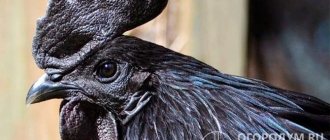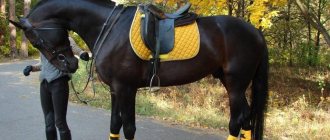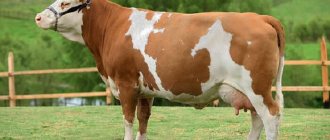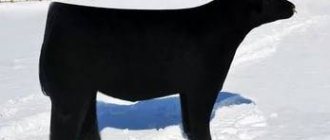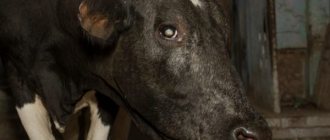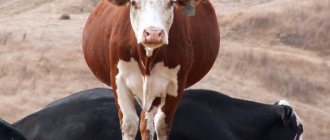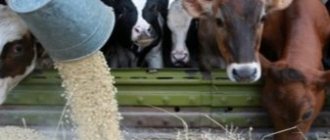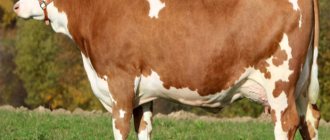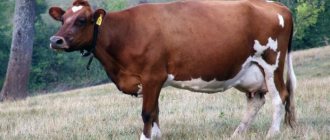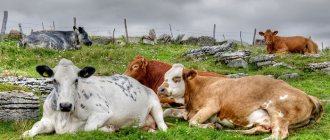Cost of dairy cattle
| Name of product | Age, months | Productivity by mothers, thousand l/year | Price, r/kg |
| Chicks | 6-15 | up to 4.5 | 100 |
| Heifers | 17-21 | up to 4.5 | 110 |
| Improved heifers | 17-21 | until 6 | 160 |
| Name of product | Age, months | Productivity by mothers, thousand l/year | Price, r/kg |
| Chicks | 6-15 | up to 5 | 150 |
| Heifers | 17-21 | up to 6.5 | 190 |
| Breeding heifers of Elite Record class | 6-15 | from 6 to 8 | 180 |
| Breeding heifers of Elite Record class | 17-21 | 6-7 | 225 |
| Breeding heifers of Elite Record class | 17-21 | 7-8 | 240 |
| Breeding heifers of Elite Record class | 17-21 | 8-9 | 250 |
| Breeding heifers of Elite Record class | 17-21 | over 9 | 260 |
For detailed prices for dairy heifers and heifers in Russia, please call.
Types and breeds of cows
Domestic cattle are raised for meat, milk or hides or used for draft power in Europe, India and Africa. Several other animal species, such as the Asiatic buffalo, the Tibetan yak, the guyal and banteng of Southeast Asia, and the North American plains bison, have been domesticated or domesticated and are used to breed cow breeds.
All modern cows belong to the following species:
- Bos taurus (European species, some of the representatives are Shorthorn and Jersey);
- Bos indicus (Indian species of zebu, for example, the Brahman breed);
- obtained by crossing the first two (for example, Santa Gertrude).
The breeds of cows known today did not always exist, and many were recently developed.
Determining the breed of a cow is difficult due to the cross-breeding of animals, although the term is widely used, well accepted and associated with cows. Typically, a breed refers to animals that have been selectively bred over a long period of time to have a distinctive identity in color, size, body shape, and function, and that these or other distinctive characteristics are retained in their offspring.
Breeds are created by generations of breeders striving to create and preserve a specific type of cow with desired characteristics. This is achieved by working on the principle of “like begets like.” Only in relatively recent times has the science of genetics, and especially population genetics, contributed to the creation of new breeds of cows.
There are many old breeds in continental Europe - for example the Charolais beef breed and the Normandy dairy breed and many others - but British breeds have become the basis for the huge herds of cows around the world that supply much beef and dairy products to the market.
Aberdeen-Angus representatives
The Swedish breed is represented by cows that produce meat. Breeding occurs all over the world. Below we consider the main features of the breed.
- A meat breed with a corresponding appearance. The bull and heifer have a fairly round body with short legs. The animals have a heavy head that is in line with the neck and shoulders. Representatives have a strong lower back with large hips.
- They are considered not as large cows as Russians, since their weight does not exceed 950 kg.
- They are distinguished by thin bones.
- Meat products are distinguished by very thin layers of fat (Russians also win according to this criterion). One cow can produce 60% of its meat.
- Crossing with other breeds results in the transfer of all basic meat qualities.
Black Aberdeen dogs are quite common for breeding. The animals are resistant to low temperatures and also tolerate climate changes well, which the Russians learned from them.
Beef cows
Highland
The large head with long fringe (which appears to cover the eyes), long and dark horns make the breed memorable and unusual.
The cow has a double layer of wool - a downy undercoat and long outer fur, it reaches a length of 30 cm and is covered with oils that repel moisture. In hot, dry climates, Highland cows shed thick fur, then grow new fur when wet, cold weather returns.
The coat color is black, spotted, red, yellow and grayish brown. The breed is hardy with a natural and unique ability to graze effectively on pastures that are poor in vegetation. It is distinguished by its longevity, many cows reproduce at the age of more than 18 years, giving birth to 15 calves in their lifetime. Maternal instinct is developed; even first-generation heifers rarely abandon their offspring.
Adult bulls weigh about 800 kg, cows - 500 kg.
They produce lean beef, with marbled, tender and juicy flesh with a characteristic taste. Cow meat is healthy, nutritious, lower in fat and cholesterol, and higher in protein and iron than other cow breeds.
Aberdeen Angus
The breed is born without horns. Cows are black or red, although the dominant shade is black, sometimes white appears on the udder.
The breed is resistant to harsh weather, undemanding, easily adaptable, and good-natured. Specimens ripen early, after slaughter they produce meat carcasses with pleasant-tasting marbled beef. The Angus breed is used in crossbreeding to improve the quality of animals. Females have a good ability to give birth and raise calves. They are also used as a gene pool, since the dominant gene conveys quality characteristics.
Hereford
The cow breed is colored from dark red to red-yellow. White ones look contrasting against this background:
- head;
- withers;
- dewlap;
- stomach.
Also common are cows with white sides and white markings below the knees and hocks. Most animals have short, thick horns that usually curve on the sides of the head, but the Hereford hornless cow was bred in North America and Great Britain.
Mature males weigh up to 800 kg, females about 550 kg.
This breed is energetic and renowned for its longevity, with females producing calves over 15 years of age. Bulls produce offspring in a herd up to 12 years or more. Many breeders keep animals until they die of natural causes.
The Hereford breed lives in the arctic snows of Finland, endures the heat of the Northern Transvaal, and withstands the harsh climate and coarse grasses of northern Uruguay or the subtropical zones of Brazil.
What do experienced cattle breeders recommend?
In order for the keeping of polled animal breeds to be successful, it is necessary to adhere to certain rules and recommendations. These nuances apply to all types of cows, regardless of the presence of horns:
it is necessary to pay attention to the hygiene of keeping the cows, change the bedding on time, which should be dry and warm; it is important that their diet is balanced - it must contain green food and root vegetables; It is important to systematically contact veterinarians for preventive examinations and vaccinations.
Pet hygiene consists of systematically washing the udder and combing the coat, if necessary, using a clean, stiff brush. You also need to regularly remove dirt from the surface of the hooves. The diet should contain fresh grass, hay, mixed feed, crushed grain, and artificial additives. Constant access to clean drinking water is also necessary.
You cannot raise polled and horned cows together - this increases the risk of injury to the former.
Description
This animal does not have an unambiguous name - on the one hand, everyone calls it a cow, which is a term for females, on the other, the scientific name “domestic bull” skews in the opposite direction, characterizing only males. In any case, this is an artiodactyl animal, classified on the farm as cattle (cattle). The benefits of such livestock are comprehensive - they provide meat, milk, and leather.
The body of an adult individual usually does not exceed 2 meters, and the height is 1.5 meters, although even these figures are close to the maximum and are often overestimated. A noticeable part of the animal’s body is its one and a half meter tail, with the help of which it is convenient to ward off annoying insects. A fattened breeding bull can weigh up to 1 thousand kilograms, but dairy cows, the point of breeding which is not to gain weight, weigh “only” about 400 kg. The body rests on legs up to a meter long, with the average diameter of the hooves being 25 cm.
A domestic bull looks different - the color depends very much on the breed and is most often designed in black, black and white or red tones. The coat is usually quite thick, but not very long, although this also depends on the breed - for some regions a thick “fur coat” would not hurt. The same diversity is observed in the characteristics of horns: there are species in which their length can reach a meter, but the average should be considered 20 cm, while some breeds, despite being classified as cattle, lack horns at all.
The muzzle has an elongated shape, the nose is large and somewhat blunt. There are horns at the top of the head, and ears next to them. The eyes are densely covered with eyelashes. The neck is thick, reminiscent of a horse's, only more reliable.
Since the animal has been living in close proximity to humans for several thousand years, its habits have changed in many ways, and the rapidly growing humanity has long destroyed its closest wild relatives. For this reason, today there are no artiodactyls in the wild that could be considered an analogue of livestock. Another thing is that there are almost one and a half billion of these animals in barns around the world, and Europe accounts for only a tenth of them.
Diseases and prevention
To prevent the occurrence of diseases, you need to regularly visit the veterinarian. In these animals, the most common diseases are related to the lungs and esophagus. Polled cows have bronchitis. They happen due to drafts, cold, untimely replacement of bedding, and moisture in the barn.
If artificial additives are poorly crushed, then the animal may experience a blockage of the esophagus. This condition is characterized by overexcitement of the animal, foaming at the mouth. Immediate veterinary attention will be required.
Infectious diseases are prevented by a blood test and a number of necessary vaccinations. Polled cows produce excellent meat and milk. To obtain healthy food products after slaughter, you must adhere to the rules of keeping animals and follow the diet.
Aishir cows
Cattle of this breed are considered the most optimal for raising in the northern part of the country. In hot regions, cows lose their productivity and often get sick. The advantages of the Aishir species are as follows:
- high milk production (on average up to 7 thousand liters per year);
- unpretentiousness in maintenance and feeding;
- easy acclimatization;
- good health;
- rapid puberty;
- long-term preservation of high milk yields (up to 12 years of age).
The cows in the herd are distinguished by their variegated color - red-brown spots appear on the white background of the fur. The physique is proportional: a wide straight back, not a long body, a narrow deep chest with a dewlap, straight short limbs with strong hooves, a narrow head with massive light horns set to the sides.
Aishir cows
Females of the Aishir breed are ready for mating already at the age of one and a half years. The calf at birth weighs at least 25 kg and has excellent immunity. With proper nutrition, one-year-old bulls reach a weight of 300 kg. From an economic point of view, it is profitable to keep cows due to the high quality of milk and the corresponding price for it.
Breeds of polled cows
Several breeds of cows have been developed in which polledness is inherited.
Russian komolaya
The Russian Komolaya, as a result of crossing the Aberdeen-Angus and Kalmyk breeds, arose in 2007 in the Stavropol Territory. This took about half a century. The livestock numbers about 8 thousand heads.
Russian polled breed
Characteristics of the Russian polled cow:
- well-built, large rectangular body with a wide, massive back and well-developed muscles of the chest;
- the head is small and light, there are no horns;
- the weight of a female reaches 1000 kg, a male – 1300 kg;
- all individuals are black;
- the skin is elastic.
The Russian polled breed of cattle produces dietary meat with a low percentage of fat and a protein index of 5.5, which exceeds that of similar breeds. The meat has a marbled tint, the number of bones does not exceed 18% of the entire carcass. Due to its high amino acid composition, it is indicated for sick people on a diet. The animal is characterized by rapid acclimatization and stable immunity to many diseases. Russian polled is unpretentious to feed, stress-resistant, and hardy.
Aberdeen Angus
The Aberdeen Angus polled cow is a representative of the Scottish beef breeds. Its appearance dates back to the 19th century. The new breed was started by black polled representatives from the counties of Angus and Aberdeen. In addition to Scotland, the breed is bred in Russia, the USA, Canada and Australia.
Characteristics of the Aberdeen Angus polled cow:
- Dense, barrel-shaped physique with a straight back and powerful lower back;
- The head is heavy, there are no horns, the neck is practically absent;
- Legs are short with large hips;
- Height at the withers reaches 1.5 m;
- The weight of an adult female is 650 kg, a breeding male is over 950 kg;
- The coat is exclusively black.
With good feeding, the slaughter yield of meat exceeds 60%. The product is of high quality with a thin layer of fat. The breed is used to breed other breeds and passes on polledness to them, as well as its meat productivity indicators. The breed quickly acclimatizes and tolerates cold well.
Redpole
The English breed of polled cow Redpole was obtained in 1850 as a result of crossing dairy individuals from the counties of Norfolk and Suffolk. This is a mixed meat and dairy breed. The Suffolk branch is represented by the red-motley and chestnut dairy cow, and the Norfolk branch is represented by the bright red beef, horned cow. Breeding takes place in England, Africa, Australia and the USA.
Character traits:
- physique is moderately full, deep;
- slightly shortened legs;
- some individuals may have white spots on the udder and tail;
- the body weight of a cow reaches 650 kg, a bull – 900 kg;
- the wool is smooth;
- color – red-cherry.
English breed of polled cow Redpole
Milk productivity is up to 4500 liters annually, milk fat content exceeds 4%. Excellent quality meat, the slaughter yield of which is 60%. At the age of 16 months, the cow becomes pregnant. The Redpole breed has good heat tolerance. Thick fur and thick skin effectively protect against insect bites. Poledness may in isolated cases be disrupted by the appearance of a horned specimen.
Iowa cow
This decorative breed appeared in the American state of Iowa from farmer M. Lottner. The cow costs about 5 thousand dollars, thanks to its unusual characteristics:
- small body size;
- the head is small, without horns, the neck is short;
- the back is straight, the back is slightly raised;
- the long tail ends with a tassel;
- no udder;
- soft, long fur, reminiscent of plush;
- various colors.
Meat performance is in no way inferior to other polled breeds. The Iowa cow's plush coat requires special care.
Decorative breed of cow from Iowa
East Finnish
This is a milk producing breed. All representatives are 100% polled. Characteristic:
- the weight of a cow does not exceed 600 kg, a bull – 700 kg;
- the udder is tub-shaped, well developed;
- The color is light brown, the inner surfaces of the hind legs and belly are white.
The slaughter yield of meat does not exceed 50%. One lactation brings up to 7 liters of milk, the fat content of which is about 4.38%. Unlike previous breeds, the East Finnish polled cow is quite whimsical. To obtain high milk yields, an abundance of succulent grass in the feed is required. Animals need insulated barns in winter with a constant temperature of at least +5 degrees.
Shorthorn polled breed
There is also a Shorthorn breed with short horns due to the presence of the polled gene. The Hereford breed was divided into two separate types: horned and polled.
Dairy cattle breed Istobenskaya breed
The Red Pied dairy breed is the “youngest”, officially registered in 1998, as a result of crossing Red Pied Holstein bulls with Simmental cows. The new breed of cows has proven itself well in the Central Black Earth, Volga, West Siberian and East Siberian regions; its number forms more than 3% of the total number of cattle in our country.
The color is almost 100% red-motley.
The constitution of this breed is close to the Holstein. The height at the withers for cows is 132-138 cm, for bulls it is 140-145 cm, the chest circumference of cows is no more than -200 cm. and for bulls - 235 cm. The shape of the udder in red-and-white cows is mainly cup-shaped with an index of 42-43%. The rate of milk excretion reaches 1.8 kg/min.
The live weight of calves is about 37 kg, one-year-old heifers weigh on average 280 kg, and at 16-18 months their weight is close to 400 kg. Adult cows gain weight from 530 to 650 kg, mature bulls can weigh 720 kg.
The red-motley breed is characterized by high meat productivity, the slaughter yield of 15-18 month old bulls reaches 56-60%. Currently, further selection work is being carried out to improve the milk productivity of red-motley cows.
The Istobensky breed appeared on the territory of the modern Kirov region at the end of the 19th century. through the selection of local livestock and improvement of its gene pool with Kholmogory, Schwyz, Yaroslavl and East Frisian breeds. Official recognition of the breed took place in 1943, but excellent productivity of cows began to be recorded in 1935.
In 70%, the color of the animals in question is black-and-white or black with a white stripe along the back to the rump; sometimes there are individuals of red-and-white and red colors. Istobensky cattle are typically low-dairy, elongated-angular, strong in constitution. The height of cows at the withers reaches 129 cm; head elongated;
The weight of calves at birth does not exceed 30 kg, full-aged cows weigh 430–480 kg, and adult bulls weigh 750–900 kg. With intensive fattening, cows are able to gain 600 kg, and bulls - 1050 kg. One-year-old bulls reach 280-300 kg, the average daily gain is close to 800 grams. The slaughter yield is 52-56%.
The usual milk yield of Istoben breed cows is about 3700 kg. milk, with a fat content of 3.4 - 5.5% and a protein content of 3.50 - 4.1%. Record milk productivity indicators were demonstrated by cows of the Kirov Meadow Swamp Experimental Station: Fara No. 1315 – 8366 kg. milk for 300 days of lactation with a fat content of 4.98%;
from Beluga milked 8127 kg in 300 days of 6 lactation. milk with a fat content of 4.07% and protein of about 3.5%. Highly productive longevity was shown by: cow Bakhcha No. 612, which produced 32,777 kg in 4 lactations. milk with a fat content of 4.01%, i.e. 8194 kg of milk for every 300 days; cow Dubna No. 620 gave 37,489 kg for 7 lactations. milk with a fat content of 4.12%.
The Angler (angel) breed of cows was bred in Germany; as a result of painstaking work, a type with a strong constitution, a good udder shape, suitable for machine milking, and high milk and fat content was created. Anglers have a typical milky exterior with developed dense muscles.
The color is red with dark shades in the head, neck and limbs.
We suggest you read: Keeping cows rules costs features
The head of the Angler breed of cows is dry, compact, the horns are light gray with dark ends, directed forward to the sides and slightly upward, the neck is of moderate length with delicate folding of the skin, the back and lower back are straight, long, wide, the sacrum is straight, wide, the entire rear third of the body well developed in width, and the middle third is voluminous, the udder is large, glandular, cup-shaped with evenly developed lobes and with a large margin, the nipples are of medium length, cylindrical and evenly spaced.
The average live weight of Angler cows is 500-580 kg.
Due to the presence of high economically useful traits, Angler cattle were used to improve the Danish Red, Estonian Red, Steppe Red and other red breeds of Europe.
The average productivity of cows reaches 5000 kg per year, the fat content of milk is 5.01%.
Description and characteristics of hornless breeds
It is no coincidence that polled cows have received widespread appreciation. They are characterized by ease of maintenance and the ability to grow them without a separate room. At the same time, such cattle does not lose either qualitative or quantitative indicators.
Aberdeen Angus
These cows were obtained at the end of the twentieth century in the counties of Angus and Aberdeen (Scotland). It is after this territory that the breed is named.
For breeding work, local polled cattle of no breed were taken. Today this variety is popular in Canada, Australia, America, Argentina, New Zealand and the Russian Federation. The Aberdeen Angus cow is distinguished by its early maturity, excellent meat quality and resistance to cold.
Important! No housing is required for Aberdeen Angus cows; they tolerate low temperatures well. But this breed needs large areas for walking.
The main parameters of the breed are presented in the table:
| Parameter | Male | Female |
| Weight, kg | 750–1000 | 500–700 |
| Height at withers, cm | 120–150 | |
| Milk yield, l/year | 2000 | |
| Meat yield, % | 60–70 | |
| Early ripening, months | 14–15 | |
| Suit | Red, black | |
| Body type | Muscular, with a wide, rounded body, short neck, deep chest and straight legs. |
- The advantages of Aberdeen Angus cows include:
- rapid weight gain and precocity;
- excellent taste characteristics of meat;
- when mated with other breeds, offspring are obtained that inherit the early development and productivity of Aberdeen-Angus.
Stuffed cow from Iowa
You can learn about the homeland of the described breed by its name: it was bred in the American state of Iowa. The breed is non-traditional and is considered more decorative, participating in exhibitions - this cow cannot be classified as either meat or dairy.
Read more about the peculiarities of breeding the Iowa Teddy Cow.
Distinctive features:
- missing horns and udder;
- external data indicate belonging to cattle;
- the head is medium-sized, set on a small neck;
- croup raised;
- the tail is long, ending in a tassel at the end.
Important! Because of their soft, lush, and long coats, Iowa cows are called plush cows. However, maintaining the fur in this condition is quite difficult
Russian
This is a fairly young breed, the official history of which began in 2007 in the Stavropol Territory. The Kalmyk and Aberdeen-Angus breeds are taken as the basis. Today the number of Russian polled animals is about 10 thousand heads.
- The main advantages of the breed are:
- heavy weight;
- rapid weight gain;
- unpretentiousness;
- fast acclimatization;
- stress resistance;
- high level of endurance.
The main characteristics of the Russian polled cow are described in the table:
| Parameter | Male | Female |
| Weight, kg | 1000–1200 | 750–800 |
| Milk yield, l/year | 800–900 | |
| Meat yield, % | 70–80 | |
| Rate of development, months | 15–24 | |
| Suit | Pure black, no stains | |
| Body type | Rectangular, with well-defined muscles, a wide chest, a large head and straight, strong legs. |
Redpole
The British breed comes from the counties of Norfolk and Suffolk, its origins date back to the mid-19th century. Poledness is hereditary. Direction: meat and dairy.
Main indicators of the red floor:
| Parameter | Bull | Buryonka |
| Weight, kg | 800–900 | 600–650 |
| Height at withers, cm | 120 | |
| Milk yield, l/year | 3000–4500 | |
| Meat yield, % | 60 | |
| Rate of ripening, months | 15–16 | |
| Suit | From red to cherry. Some representatives may have white spots on the tail and udder | |
| Body type | An elongated body with oblique ribs, the udder is well developed. |
The redpole is accustomed to cool habitats and feels comfortable in damp and cool climates.
Important! In hot and dry climates, red breeds not only lose productivity, but can also suffer from bronchitis and rhinitis. Poledness is not a disadvantage, but an advantage of cattle
Such cows are calmer and more easily adapt to new conditions and the owner, and the productivity of some breeds is not inferior to the horned cows we are used to
Polledness is not a disadvantage, but an advantage of cattle. Such cows are calmer and more easily adapt to new conditions and the owner, and the productivity of some breeds is not inferior to the horned cows we are used to.
Why do they become like this?
The hornless appearance occurs at a deep gene level. A certain combination of genes leads to the fact that the breed is hornless. Since the “poled” gene is dominant, a generation of 2 hornless animals will also be hornless. The next will have rudimentary horns, and the third will distribute representatives of both species among themselves, but the hornless ones will dominate over the horned ones. Interestingly, a polled cow costs much less than regular cattle.
The following representatives are called polled cows:
- Russian polled cow is a breed considered the most prominent representative of the species;
- red sex;
- Aberdeen Angus;
- Swedish breed;
- East Finnish breed.
You can learn further about how the state in question was obtained, as well as the main differences between all representatives.
Features of keeping and feeding adults
A pronounced feature of this breed is the absence of external head bone growths. Some individuals also lack the internal formations that form the basis of the horns. Others have signs of the presence of horny “roots”.
This external feature is due to the presence of a special gene in the cow’s DNA, which blocks processes that promote the growth of bone formations in the upper region of the head. Initially, this genetic marker was found randomly in animals. As a result of its action, an externally unconditioned absence of horns was observed. This was considered an individual flaw of a particular individual.
We invite you to familiarize yourself with Saffron seasoning: beneficial properties and applications
Subsequently, the practice of crossing animals based on the presence of the polled gene began to be practiced. Thanks to this gene, hornlessness dominates hornedness. When an individual with horns is crossed with one that does not, offspring without horns are born. Only in the third or fourth generation do animals appear with signs of the formation of the horny part of the skull.
The predominant breed in Russia is the Russian Polled. It was obtained by crossing the Kalmyk and British breeds. It was officially registered as an independent breed more than ten years ago. She was bred and fixed in her niche by breeders of the Stavropol region.
Currently, the distribution area covers almost all regions of Russia in which livestock farming is developed.
The Russian polled breed has characteristic external features by which it can be distinguished from other breeds.
- The main feature is black color. Not only the fur, but also the skin of the animal itself is black. There are also other colors, however, black is the dominant one.
- The skin of a Russian polled cow is distinguished by a low percentage of thickness and length of hair. Based on this feature, it can be characterized as a short-haired breed. Although in regions with cold climates there are branches of the breed that have a relatively long coat.
- The skeletal structure of the Russian Komoloy is distinguished by a pronounced thoracic part. As a result, the front of the cow appears larger than the rear of the body. The legs are relatively short and strong, which allows the animal to successfully feed on mountain slope pastures.
Individuals of this breed are distinguished by large overall dimensions and weight parameters. The average length of an adult cow or bull is about 2 m. The weight of calving animals can reach 1200 kg.
What does "polled" mean?
Poledness is a natural hornlessness that occurs not only in cows, but also in other animals. The word “butt” means a bump or bulge at the end of the trunk of a tree or plant. Therefore, instead of horns, bump-shaped thickenings called “butts” are formed.
Characteristics: Cows are polled due to the following circumstances: deliberate cutting of horns in order to prevent injury; heredity. Breeders have done a tremendous amount of work, as a result of which some animal breeds have become hornless. An artificially created or acquired feature has become congenital or hereditary. The result of a cow's hornlessness is obtained by combining genes.
Popular breeds
There are enough cows in our country, and they all differ in certain characteristics. But among them there are also the most common ones, which are in demand among most farmers.
Holstein breed
Today, this breed of cows can often be found not only in Russia, but also abroad. The first specimens of the breed were bred in Holland, but the most significant contribution to improving its milk qualities was made by breeders from the USA and Canada. It was with this breed that work was carried out to increase the quantity and fat content of milk.
The red-motley color stands out in this group
These animals not only have excellent external characteristics, but also productivity indicators - they produce a small amount of milk, but with a high fat content.
- The live weight of animals is 700–750 kg. The record holders are cows weighing 1000 kg. Bulls have more significant weight, whose weight can be 1250 kg. The weight of newborn heifers and bull calves is, as a rule, small: for the former it does not exceed 40 kg, and for the latter - 45 kg. The animals have a height at the withers of 143–145 cm.
- The chest is 86 cm deep and 65 cm wide. Heifers at the age of one and a half years reach a height at the withers of 126 cm.
- Representatives of this breed show themselves as dairy animals; their muscles are not as pronounced as the European black-and-white cow.
Simmental
Animals of this breed represent the dairy and meat sector. They appeared thanks to the efforts of Swiss breeders who worked to improve local Scandinavian cattle imported in the 5th century. There is also a version that the ancestors of this breed are animals that are descendants of crossing wild aurochs with peat cattle.
- meat;
- meat and dairy
Cows are mostly fawn, fawn-pied, red-pied, red with a white head. The horns and hooves have a light waxy color, and the nasal planum and tongue are also decorated. Representatives of this breed have a well-developed body. Newborn calves weigh 42 kg, one and a half year old heifers weigh 343 kg, and adult cows weigh 550–600 kg. The height of animals at the withers is no more than 140 cm.
On average, they produce 3000-3500 kg of milk per year with a fat content that does not exceed 3.7–3.9%. With proper fattening, animals show good weight gain. Therefore, after reaching the age of one and a half years, they reach a mass of 500 kg. Adult bulls have a live weight of 900–1200 kg. The meat yield at slaughter is 55–60%. The meat is of good quality: it has enough fat, delicate fiber, and is high in calories.
Black and white breed of cows
managed to obtain a breed of heterogeneous black and variegated color
The live weight of these animals is 420–550 kg. When bred at breeding farms, animals have more impressive characteristics: the weight of cows is 550-600 kg, bulls - in the range of 800-1100 kg. At slaughter, the meat yield is 50–55%.
They have a strong physique, and in appearance they completely correspond to dairy cattle. A distinctive feature of animals is their excellent adaptability to any climatic zone. These animals are large in size, with a slightly elongated proportional body, a chest of medium width, a wide back and sacrum. The belly protrudes strongly, the characteristic shape of the udder is round or cup-shaped. They have straight limbs. The traditional color is black-and-white; less common are red-and-white cows.
Cows
Aishir breed
It is an ideal option for breeding because it has an optimal ratio of milk quantity and quality.
A characteristic external feature of cows and bulls is their red-motley color. Based on the structural features of the body, signs of the dairy direction are visible. With a light bone structure, it has a pronounced midsection, a thin neck of medium length, a large and voluminous udder, shaped like a bowl with spaced nipples. The head is slightly elongated, the horns are lyre-like.
For the first time, cows of this breed give birth to offspring at the age of 25–26 months. Fertilization of heifers occurs at the age of 15–17 months, when their weight reaches 350–360 kg. The weight of newborn calves, as a rule, does not exceed 30 kg, but after reaching the age of one year their weight is 240–280 kg. Adult cows have a live weight of 450–570 kg; for bulls it is 800 kg. The meat yield at slaughter is average. Its amount in animals aged one and a half years is 50-55%. The cows have excellent milk productivity. During one lactation period, one heifer can produce 6000–7000 kg of milk with a fat content of about 4.2–4.3%. Moreover, milk from such cows contains fat globules.
Meat breeds of cattle Charolais breed
The Markidzhan breed of cows belongs to the breeds of meat productivity.
The breed was bred in Italy by crossing gray Podolsk, Romagna and Chian cattle. Markidzhan cattle are distinguished by high early maturity and meat productivity. The color of Markjan cattle is predominantly light gray or white. Cows are quite large and unpretentious in keeping. The breed is early maturing. At birth, calves usually have a brown color with a reddish tint, but during the first month they change color to that characteristic of the breed.
The average live weight of cows reaches 600 kg, bulls from 1000 to 1460 kg. With intensive rearing, by the age of 17-18 months, the live weight of bull calves reaches 600-650 kg, while the slaughter yield is 61-63%, and the feed cost per 1 kg of gain is 5.5-5.7 feed units. The meat of such bulls is tender, fine-fiber, with a large proportion of muscle tissue.
When crossing the Markjan cow breed with English beef breeds, such as Herefords or the Aberdeen Angus breed, crosses are obtained that are characterized by greater live weight and lower carcass fat content than purebred Herefords and Aberdeen Angus. The meat of such crossbreeds is lighter in color and has high taste.
The main advantages of the Markidzhan breed are their precocity, unpretentiousness to living conditions, large-sized livestock, and high meat qualities.
The Volyn meat breed was created by the method of complex reproductive crossing of breeds: Limousin - 3/8 (37.5%), Aberdeen-Angus and Hereford - 3/16 (18.75%) and local cattle - 1/4 (25%), which in the future they are bred “in themselves” using the purebred breeding method.
A characteristic feature of the breed is its red color of various shades and polled appearance. The animals have a strong constitution, proportional physique: a wide, rounded body with well-developed muscles.
The live weight of full-aged sires is 950-1050, cows - 500-550, calves at birth - 28-32 kg. Bull calves, when raised for meat at the age of 15-18 months, reach a live weight of 472-592 kg, average daily weight gain - 1000-1200 g, feed costs per 1 kg of gain - 6.2-8.0 units, slaughter yield - 60 -66%, pulp yield per 1 kg of bones - 5.1-6.1 kg.
The animals are adapted to the conditions of the Western region of Ukraine - they tolerate cold and heat well, effectively use pastures, roughage and succulent feed.
This breed of meat production is the most common in France. This breed is focused on extensive production, since it is possible to keep cows on pasture for a long time, due to the easy digestion of roughage and succulent feed, and their economical consumption per unit of live weight.
The color of the breed is light brown, with light coloring around the eyes and lower part of the body, the nasolabial mirror and the end of the tail are black. The body is muscular, wide with well-developed bones, a somewhat sagging back, a raised sacrum and strong, correctly positioned limbs. The head is small with a concave profile. Stud bulls have a hump.
Newborn heifers weigh 35–37 kg, and bull calves appear weighing 38–40 kg. The live weight of 8-month-old heifers increases to 220 – 240 kg, of bull calves to 250 – 260 kg. The weight of adult cows reaches 590-650 kg, and bulls - 850-950 kg. Young animals of the Aubrac breed are distinguished by a high growth rate, the average daily gain reaches 1300 g.
The Charolais breed was formed in eastern France in the county of Charolais in the mid-18th century. by crossing local white cattle with Simmental and Shorthorn breeds of similar color. The Charolais breed is unpretentious, adapts well to different climates, gives high gains in live weight with a large amount of muscle tissue within 2 years, which allows you to obtain super-heavy carcasses with a significant yield of high-grade meat (the ratio of protein and fat is 1:1) per 1 kg . bones.
Charolais color is fawn-white with a light nasolabial surface. Individuals are large, the height at the withers for cows reaches 136 cm, for bulls 145 cm; the body is elongated and uniform with correctly placed low limbs and thin hair. The head is short with a wide forehead; the neck is fleshy but short;
Calves from Charolais cows are born large, weighing up to 50 kg, so first-calf heifers usually have difficult calvings, and the percentage of twin calvings is high (4%), which is why in 80% of cases the help of a specialist or even a caesarean section is needed. Young animals are raised on suckling for up to 8 months, by which time the heifers reach 290 kg.
, and steers 330 kg. With intensive fattening, one-year-old bulls weigh 500-530 kg, and one-and-a-half-year-old bulls weigh approximately 650 kg. The live weight of mature cows is 700-800 kg, and that of bulls - 1000-1200 kg. The best representatives of the breed are able to gain 1000 kg, and bulls 1500 kg. The average daily growth scale shows from 900 to 1400 g.
The Belgian Blue breed of cows belongs to the breeds of meat productivity. The color of cows of this breed can be white, white-blue, bluish-piebald and black, sometimes, in the genotype of individual lines, there is a red color.
The main difference between Belgian Blue cows is their very large muscle mass. The fact is that the Belgian Blue's DNA contains a gene that suppresses the production of myostatin, a protein that is responsible for inhibiting muscle growth after reaching a certain point. Therefore, muscle growth in the Belgian Blue practically does not stop.
Interestingly, Belgian Blue calves are not born with “double” muscles. Muscles begin to appear from 4 to 6 weeks of life. Due to their low tendency to form fat, animals can be used for intensive fattening. The weight of such bulls at the age of 16-18 months reaches 700-750 kg.
The Belgian Blue breed of cows has a calm, even character. Easy calving (average age of first calving is 32 months) and early development can also be added to the advantages.
The Gascony breed is a breed of beef cows. The color is light gray with short hair. The mucous membranes are black. The cattle have good productive qualities. Adult cows weigh 650 kg, bulls 1000 kg. Bulls are fattened to a weight of 600 kg without depositing large amounts of fat. Gasconnes are recommended for crossing with the Galloway meat breed of cows and Highlands.
The main advantage of the Gascony breed is its immunity to solar radiation. Animals tolerate heat and temperature changes well. Changes in diet occur without problems. They can easily move over long distances. The breed is characterized by fertility, ease of calving and long life. The calves are very viable.
In 1997, the Red Quality Mark “Gascony beef” was awarded: pure breed - “pure taste”, which indicates the official recognition of the highest quality of Gascony beef.
The Kian beef breed of cows is one of the tallest cattle breeds in the world. The height at the withers of bulls is 170 cm (record 198 cm), cows are 150 cm. Bulls weigh 1200 - 1400, maximum weight 1800. The average weight of cows is 720 kg. The slaughter yield is 60 – 65%. Animals of the Kian breed are predominantly white; bulls have gray hair on the front part of their body; there are also light gray individuals.
The nasal planum, skin and oral mucosa are black. Calves are born red. After 3 months the color begins to change. Heifers weigh 42-48 kg at birth, and 220 kg at 6 months of age. The daily growth of young animals is 1000-1400 g; there have been cases when the average daily growth of young animals reached 2000 g.
We suggest you read: Laboratory diagnosis of rabies
Kian cattle are late-maturing and produce lean carcasses. The carcass contains 15.4% bones and 82-84% pulp. The animals have a long, rounded body; the skeleton is thin; The head is small, the profile is straight, the horns are short. The back and lower back are wide, with well-developed muscles; The chest is wide, with well-developed muscles;
Cows of the red meadow (or Mensko-Anjou) breed are predominantly red in color; large red spots are allowed. Adult bulls reach 170 cm at the withers and weigh up to 1700 kg. Cattle of this breed belong to the meat production category.
Cow breeding
The cow grows quite quickly, the physiological development of animals lasts up to 5 years, some varieties grow up to 7 years. Heifers reach sexual maturity at 7-9 months, bulls mature at the age of six months. But the ability of cows to bear viable offspring depends not on age, but on body weight: a cow is considered fully ready for fertilization at a weight equal to 60% of the weight of an adult.
To prevent too early breeding, heifers and bulls are separated at the age of six months and kept in separate stalls. Heifers are allowed to mate at the age of 18-22 months, bulls - from 14-18 months. There is no specific mating season for cows; they are able to reproduce at any time of the year.
The reproductive cycle of a cow lasts approximately 3 weeks. The “hunting” stage lasts approximately 12-18 hours, during which time the animal refuses to eat, drinks a lot, behaves excitedly and becomes uncontrollable. Mating can be free or manual: during free mating, the sire is always close to the heifers and can mate with one female several times in a row. Manual mating consists of artificial insemination using special technologies and is more often used in dairy farming.
10-15 hours after the end of the “hunting” stage, fertilization occurs, and the cow’s pregnancy lasts about 285 days. 1.5-2 months before calving, the heifer (a productively bred heifer) develops an udder. The majority of cows give birth to one calf; twins occur only in 2% of cases, but there are precedents when 6-7 calves are born at once.
The body weight of a newborn calf, depending on the breed, ranges from 18 to 45 kg, rarely up to 60 kg.
A cow's lactation begins immediately after calving, but for the first week, colostrum comes from the udder instead of milk. The female can nurse the calf for up to 9 months, but weaning occurs earlier, starting at 3 months of age, when the calf is able to eat grass.
Provided regular milking after birth, a cow is able to continuously produce milk for 11 months, then a dry period begins. After 2 months, the cow can be mated again and receive milk after the next calving.
Productivity characteristics
Adult bull weight
Adult cow weight
Daily growth of young bulls during fattening
Weight of young bulls at 1.2 years
Weight of young heifers at 1.2 years
At 15 months, young individuals already have a fairly large body weight; they are almost completely mature by this period and are ready to reproduce. But full-fledged calves can be obtained from females only at 24 months. Cows have high immunity, and they are practically not susceptible to diseases, and if they do get sick, they tolerate drug therapy perfectly.
Moreover, Russian polled animals are superior to their “parents” Aberdeen Angus in terms of meat indicators:
- by live weight - by about 10%;
- by carcass weight - by 9.8%;
- in terms of slaughter weight - by 8.9%;
- in terms of meat yield at slaughter - by 0.8%.
The meat of these cows contains a high percentage of amino acids, the protein and fat content ratio exceeds 1, and the bone content in an adult carcass is no more than 16–18%.
The amount of meat received from the herd depends on how high the reproductive rate of cows is. Usually, young bulls are fattened for slaughter, which are slaughtered at the age of 1.2–1.5 years, leaving a couple or three of them for reproduction. Therefore, the profitability of this breed depends on how often a female can give birth. In Russian polled cows, this indicator is one of the best among all meat types of cattle.
Breeds of hornless cows
There are several varieties of cows in which polledness is inherited. Moreover, in several breed lines, breeders managed to secure this trait for all representatives.
Aberdeen Angus
This breed appeared at the end of the 19th century in Scotland and belongs to beef cattle. Due to its high productivity, breeders from other countries, in particular the USA, Canada, Russia and Australia, began to engage in it.
The average weight of an Aberdeen Angus cow does not exceed 650 kg. Breeding bulls reach 950 kg or more. The height of an adult at the withers is on average 1.5 m.
Aberdeen Angus cattle breed
The physique of cattle of this breed is dense. The body is round, barrel-shaped. Legs are short. The neck is practically not expressed, the head immediately passes into the body. The back is straight with a powerful lower back. The cow's coat is exclusively black.
Among the features of the breed line are the following:
- high quality meat, distinguished by thin layers of fat;
- high slaughter yield of meat product, which, with proper feeding, is 60% or more;
- rapid acclimatization and developed endurance;
- When crossed, high meat productivity is transferred to other breeds.
Redpole
The red-sex breed line also appeared in the 19th century. Selection work on its breeding was carried out in England, in the counties of Norfolk and Suffolk. For its breeding, mainly local dairy varieties of cattle were used.
The red sex is distinguished by its red-cherry color. Some individuals may exhibit white markings on the udder or tail. The breed has average milk production. Annual milk yield is at least 4500 liters. At the same time, the meat component is also quite developed. The average weight of a cow is 600 kg, and bulls can reach 900 kg or more.
Redpole tolerates heat and mosquito bites well. Polledness can be observed in almost all offspring, but in isolated cases the gene responsible for the growth of horns may still predominate.
Redpole cattle breed
Today, this type of cattle is raised in the UK, Africa, the USA and Australia.
Iowa polled cow
Unlike the above breed lines, the polled cow from Iowa is an ornamental animal. It was bred in Iowa, USA, by local farmer Matt Lautner specifically to participate in exhibitions and fairs.
In addition to the complete absence of horns, representatives of this species also lack an udder. Outwardly, such cattle look like a plush toy. The reason for this is their small size and thick, soft-to-touch fur of various colors.
The most noticeable exterior features of the breed are:
- small sizes;
- back, represented by one straight line;
- a long tail that ends in a tassel;
- short neck;
- voluminous hair, which makes the head look disproportionately small.
Russian komolaya
The Russian Komolaya is a prominent domestic representative of hornless cows. The purpose of breeding this breed was to produce cattle with high meat productivity. Representatives of the Aberdeen-Angus and Kalmyk breeds were used as source material in breeding work. Today, the population of Russian polled animals is only 8 thousand individuals.
As for the external characteristics of the breed line, the most striking of them include:
- the weight of females is no more than 550 kg, males can reach a weight of 1100 kg;
- wide massive back;
- deep, powerful muscles in the chest;
- miniature head in comparison with the body.
The breed has a pronounced meaty build and developed muscle mass. At the same time, the yield of beef per adult in fattening is on average 80%.
Why are cattle hornless?
The absence of horns in cattle, which should have them, occurs not only in cows, but also in goats, sheep and a number of other animals. But still, instead of horns, cows have horny growths in the form of cones on their heads, called buttocks.
These individuals may be hornless due to the following circumstances:
- the horns are cut down specifically to prevent possible injury to the animal;
- the absence of horns is in the genes and is inherited from cows to offspring.
Often the appearance of hornless cows or other animals is the result of long work by breeders. They artificially created polled hair in cattle, and then turned it into congenital (or inherited) in subsequent generations.
It became possible to obtain polled cows thanks to a special rearrangement of genes in these individuals. In this case, the “hornless gene” is dominant. Moreover, it is clear that if you cross a hornless male and female, at the first birth they will also give birth to a polled calf. During the second birth, babies with the beginnings of horns will appear. But already in the third offspring, ¾ of the cubs will have only horny growths, and ¼ will be born with horns.
